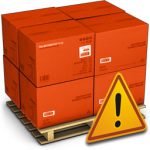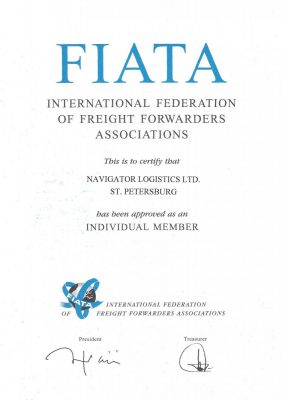 Transportation quality often depends on how correctly the classification of dangerous goods is made. Too much responsibility is imposed on the person who has made a mistake. Depending on the degree of danger, when transporting dangerous cargoes, the respective mode of transportation is to be performed. Precision of the dangerous cargo classification is the guarantee that all necessary precautions will be taken during the transportation of your cargo.
Transportation quality often depends on how correctly the classification of dangerous goods is made. Too much responsibility is imposed on the person who has made a mistake. Depending on the degree of danger, when transporting dangerous cargoes, the respective mode of transportation is to be performed. Precision of the dangerous cargo classification is the guarantee that all necessary precautions will be taken during the transportation of your cargo.
Dangerous cargoes are substances that pose a hazard on health, safety, property or environment during their operation and/or their transportation. They are divided into classes on the basis of the specific chemical properties of the substances that constitute a danger.
Important: Not all countries use absolutely identical images (label, image and/or text) in the internal rules of transportation of dangerous cargoes. Some countries use graphic symbols without inscriptions in English or with respective inscriptions made in a national language. Before transportation it is necessary to read dangerous cargo transportation rules effective in the territory of country you are interested in.
Class 1
Explosives that, by their properties, can detonate and cause fire with explosive action, as well as devices containing explosive substances and explosive items intended for the production of pyrotechnic effect;
1.1 Explosive and pyrotechnical substances and articles which have a mass explosion hazard, when an explosion affects the entire cargo instantaneously;
1.2 Explosive and pyrotechnical substances and articles which do not have a mass explosion hazard;
1.3 Explosive and pyrotechnical substances and articles which have a fire hazard with or without a minor blast effect;
1.4 Explosive and pyrotechnical substances and articles which present a small hazard during transport only in the event of ignition or initiation, causing no device or package destructions;
1.5 Explosive substances which have a mass explosion hazard and are so insensitive that when transported they demonstrate a negligible probability of initiation or pass from burning to detonation;
1.6 Articles containing extremely insensitive to the detonation substances, which do not have a mass explosion hazard and demonstrate a negligible probability of accidental initiation;
Class 2
Compressed, refrigerated liquefied and dissolved under pressure gases meeting at least one of the following conditions:
- at the temperature of 50С absolute vapor pressure is equal to or more than 3 kgf/cm3 ЗОО kPa;
- critical temperature is less than 50С;
- compressed, critical temperature is less than -10С;
- liquefied, critical temperature is equal to or more than -10С, but not less than 70С;
- liquefied , critical temperature is equal to or more than 70С;
- dissolved under pressure;
- refrigerated liquefied;
- aerosols and compressed gases which fall within the scope of special instructions.
2.1 Non-flammable gases;
2.2 Non-flammable, toxic gases;
2.3 Flammable gases;
2.4 Flammable toxic gases;
2.5 Chemically unstable;
2.6 Chemically unstable toxic.
Class 3
Flammable liquids, mixtures of liquids, as well as liquids containing solids in solution or suspension which give off a flammable vapor having a flash point of 61°C and less in the closed crucible;
3.1 Flammable liquids with a low flash point and liquids having a flash point of below -18С in the closed crucible or having a flash point together with other dangerous properties apart from flammability;
3.2 Flammable liquids with a medium flash point — liquids with a flash point range of -18 to 23С in the closed crucible;
3.3 Flammable liquids with a high flash point — liquids with a flash point range of 23 thru 61С in the closed crucible.
Class 4
Flammable solids and materials (excluding those classified as explosives) which, when transported, are readily combustible by external ignition sources as a result of friction, moisture absorption, spontaneous chemical transformations as well as while heating;
4.1 Flammable solids which are readily combustible by a short time impact of external ignition sources (sparks, flame or friction) and are capable of active burning;
4.2 Spontaneously combustible substances which are liable to spontaneous heating and combustion under ordinary conditions of transportation;
4.3 Substances which emit flammable gases.
Class 5
Oxidizing substances and organic peroxides which are capable to emit oxygen, to contribute to combustion, and as well, under respective conditions or in mixture with other substances, to cause a spontaneous combustion or an explosion;
5.1 Oxidizers which by their nature are not flammable but they contribute to combustion of other substances and emit oxygen when burning, thus increasing the intensity of fire;
5.2 Organic peroxides which in most cases are flammable, can act as oxidizers and interact dangerously with other substances. Most of them are easy to inflame and are sensitive to a chock and friction.
Class 6
Toxic and infectious substances, capable to cause death, intoxication or disease if swallowed or inhaled or by skin or mucous membrane contact;
6.1 9 Poisonous (toxic) substances, capable to cause intoxication if inhaled (vapors, dust), swallowed or by skin contact;
6.2 Substances and materials, containing pathogens, dangerous for people and animals.
Class 7
Radioactive substances with specific activity more than 70 kJ/kg.
Class 8
Caustic and corrosive substances which cause damage to skin, eyes and airway, metal corrosion and transport, construction or cargo damage, and as well are capable to cause fire when interacting with organic materials or some chemical substances;
8.1 Acids;
8.2 Alkalies;
8.3 Different caustic and corrosive substances.
Class 9
Substances with a relatively low risk during transportation which are not classified to any of the previous classes, but require application of certain transportation and storage rules;
9.1 Solid and liquid combustible substances and materials, whose properties do not let refer them to the 3rd and 4th classes, but under certain conditions they can be fire dangerous (flammable liquids with a flash point range of 61 C to +100 C in the closed crucible, fibers and other similar materials);
9.2 Substances becoming caustic and corrosive under certain conditions.
